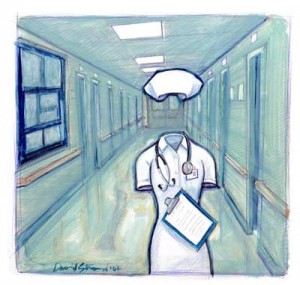 The United States is currently experiencing a nursing shortage. As the need for health care grows, there is a greater than ever need for educated and qualified nurses. This nursing shortage has far-reaching impacts on various aspects of health care.
The United States is currently experiencing a nursing shortage. As the need for health care grows, there is a greater than ever need for educated and qualified nurses. This nursing shortage has far-reaching impacts on various aspects of health care.
Projected Nursing Shortage
If the current shortage continues to project in the same manner, it is likely that by 2025, the US will be short of 260,000 registered nurses. The Bureau of Labor Statistics (BLS) has indicated that by 2018, more than 581,500 positions will be created for registered nurses. This will bring up the present RN workforce by about 22%. Unless steps are taken to eliminate shortage, the new jobs will only add to the existing crisis. In order to meet this challenge, at least 30,000 additional nurses should graduate annually, which means 30% more than the current number of nurses that graduate annually now.
Impact Of Nursing Shortage
Due to insufficient staffing, the existing nurses are forced to work overtime and many shifts. This in turn raises their stress levels, which impacts their level of job satisfaction, leading nurses to quit. The American Medical Association reports that nurses report greater job dissatisfaction and increased emotional exhaustion when they put in charge for more patients than they could manage safely. The failure to retain nurses, therefore, could contribute to the death of patients, which would have been avoidable had there been sufficient nurses to manage the workload.
Raising Public Awareness Over The Shortage
Much concerned over the shortage of Registered Nurses, the American Association of Colleges of Nursing (AACN) is working to bring attention to this health care crisis in America. This organization works with policy makers, schools, similar organizations and the media to ensure that the nursing shortage situation is brought into global focus. The objective behind this effort by the AACN is to identify strategies, form partnerships and perhaps enact legislations that will help address and remedy the nursing shortage.
Addressing The Nursing Shortage
The following strategies have been formed to address the nursing shortage:
- NursingCAS, America’s centralized application service for registered nurse programs was launched to ensure that vacant seats in nursing schools are filled. Close to 55,000 vacant seats are available in both graduate and baccalaureate nursing programs and NursingCAS allows a way to fill these seats and maximize nursing school educational capacity.
- A Nurse Education, Expansion and Development Act (NEED Act has been introduced which is aimed at authorizing Capitation Grants for nursing schools, so that the number of faculty and students can be increased. This method has been successful in the past.
- Individual states are creating public-private partnerships that yield the funds for nursing schools to hire more nurse faculty and educate nursing students.
- Nursing schools form strategic partnerships and seek financial support from private parties and major health care organizations to help increase their student capacity.
- Health research institutes strategies include the development of public-private partnerships, creating healthy work environments, designing flexible roles for advanced practice nurses and using technology as a training tool to make up for the lack of educators.
{ 5 trackbacks }